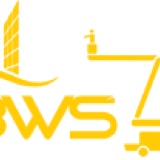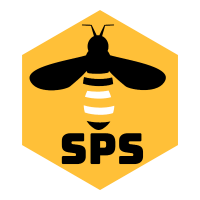Information
-
Document No.
-
Audit Title
-
Client / Site
-
Conducted on
-
Prepared by
-
Location
-
Personnel
-
Job Site/Address:
-
Height Work
Checklist Action Item
-
Job Quotation Sheet available that highlights hazards identified at time of job scope estimating.
-
Task Analysis Worksheet or a Site Specific Safety Plan (Safety Plan) available on the job for the type of work being undertaken.
-
All workers, including contractors, competent to do the job i.e. have working at height competency and/or abseiling competency.
-
Initial site inspection undertaken by a competent person (BWS Manager or Truck Boss)
Job Sign-On by all workers
-
Job Sign on by all workers:
Worker
-
Signature
-
Truck Boss Sign-Off
Truck Boss
-
Signature
-
Select date
Height Work Task Analysis Worksheet
-
Appropriate PPE
-
Necessary Plant
-
Appropriate isolation of work area
-
Reference Documents:
-
"Best Practice Guidelines for Working on Roofs" - DOL Publication
http://www.business.govt.nz/healthandsafetygroup/information-guidance/all-guidance-items/best-practice-guidelines-for-working-on-roofs -
"Preventing Falls from Height" - DOL Factsheet
http://www.business.govt.nz/healthandsafetygroup/information-guidance/national-programmes/preventing-falls-from-height-in-construction/factsheets-bulletins-and-alerts -
"Short Duration Work at Height" - DOL Factsheet
http://www.business.govt.nz/healthandsafetygroup/information-guidance/all-guidance-items/short-duration-work-at-height/short-duration-work-at-height.pdf
Sequence of Basic Steps
-
Step 1: Initial site inspection including review of Job Quotation Sheet and discussion with client rep (if present). Includes assessment of roof access and roof work requirements. Assess roof risk including brittle roofs, roof pitch, edge fall protection, roof perforations, skylights, power lines/switch boxes etc.
-
Check for:
Fall from height
Site vehicle collision
Electrocution
Adverse weather -
Step 2: Determine Job access, vehicle location & setup, equipment requirements (including safety). Record details on Job Quotation Sheet.
-
Check for:
Unstable setup for EWP -
Step 3: Gain access to roof area via EWP or ladder or scaffold.
-
Check for:
Fall from access equipment -
Step 4: install safety systems (edge fall protection, walk boards, safety lanyards)
-
Check for:
Fall from Height risk -
Step 5: Transfer necessary equipment to roof area.
-
Check for:
Fall from Height
Slip, trip, fall
Manual handling
Inappropriate operation of EWP -
Step 6: Carry out roof cleaning/washing task.
-
Check for:
Fall from Height
Electrocution
Slip, trip, fall
Contact with cleaning chemical -
Step 7: Retrieve equipment from roof area at end of cleaning task.
-
Check for:
Fall from Height
Slip, trip, fall
Manual handling -
Task Analysis Completed By: (Initial)
-
Task Analysis Completed By: (Sign Off)
-
Select date
-
Building/Roof Access
Building/Washing Task Analysis Worksheet
-
Appropriate PPE
-
Necessary Plant
-
Appropriate isolation of work area
-
Reference Documents:
-
"Approved Code of Practice for Power-Operated Elevating Work Platforms"
www.business.govt.nz/healthandsafetygroup/information-guidance/all-guidance-items/acop-power-operated-elevating-work-platforms -
"Preventing Falls from Height" - DOL Fact Sheet
http://www.business.govt.nz/healthandsafetygroup/information-guidance/national-programmes/preventing-falls-from-height-in-construction/factsheets-bulletins-and-alerts -
"Short Duration Work at Height" - DOL Fact Sheet
http://www.business.govt.nz/healthandsafetygroup/information-guidance/all-guidance-items/short-duration-work-at-height/short-duration-work-at-height.pdf
Sequence of Basic Steps
-
Step 1: Initial job site inspection including review of Job Quotation Sheet requirements and discussion with client rep (if present). Includes identification of hazards for EWP access and work requirements around the site. Assessment of access hazards eg power lines/switch boxes, potential obstacles, uneven ground, other site vehicles, pedestrian traffic, height/reach requirements, weather conditions. Record details on Job Quotation Sheet.
-
Check for:
Adverse weather - high wind, rain
Site Vehicle collision
Un-trained workers -
Step 2: Check EWP and equipment availability/suitability. (Some of this May be done prior to site arrival). Vehicle COF, current certification for all hoists, lanyards, safety harnesses.
-
Equipment malfunction or failure
-
Step 3: Establish EWP/ladder position, with outriggers in place, and necessary equipment connected and available for use. Ensure necessary safety equipment/PPE available and used appropriately.
-
Check for:
Fall from access equipment
Crush
Slip, trip, fall -
Step 4: Test run EWP and cleaning equipment at low level prior to commencing cleaning operation.
-
Equipment Malfunction
-
Step 5: Carry out cleaning/washing task.
-
Check for:
Fall from height
Equipment/materials falling from above
Electrocution
Slip, trip, fall
Sun burn
Contact with cleaning chemical -
Step 6: Relocate and re-establish EWP at next operating position. Repositioning of outriggers and check to ensure all equipment, safety devices and PPE in place.
-
Check for:
Fall from height
Slip, trip, fall
Manual handling -
Step 7: Carry out cleaning/washing task
-
Check for:
Fall from height
Electrocution
Slip, trip, fall
Contact with cleaning chemical -
Step 8: Dis-establish site at end of cleaning operation. Close down machinery, set up EWP for return to base, collect up all equipment and materials.
-
Check for:
Equipment, tools fall from vehicle
Slip, trip, fall -
Task Analysis Completed by: (Initial)
-
Task Analysis Completed by: (sign off)
-
Select date
Seven Point Analysis To help identify hazards, for each step ask - Can I?
-
To help identify hazards, for each step ask - Can I?
-
Strain or sprain my back or other muscle?
-
Be caught in, on or between anything?
-
Slip, trip or fall from height, on the same or lower level?
-
Be injured by poor plant/job design?
-
Be stuck by or against anything?
-
Come in contact with a hazardous substance?
-
Come in contact with an energy source?














